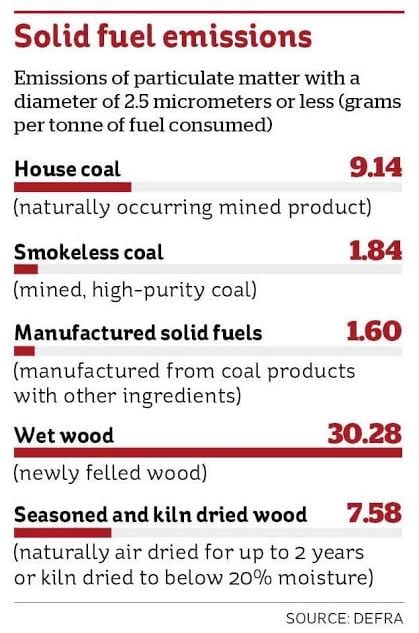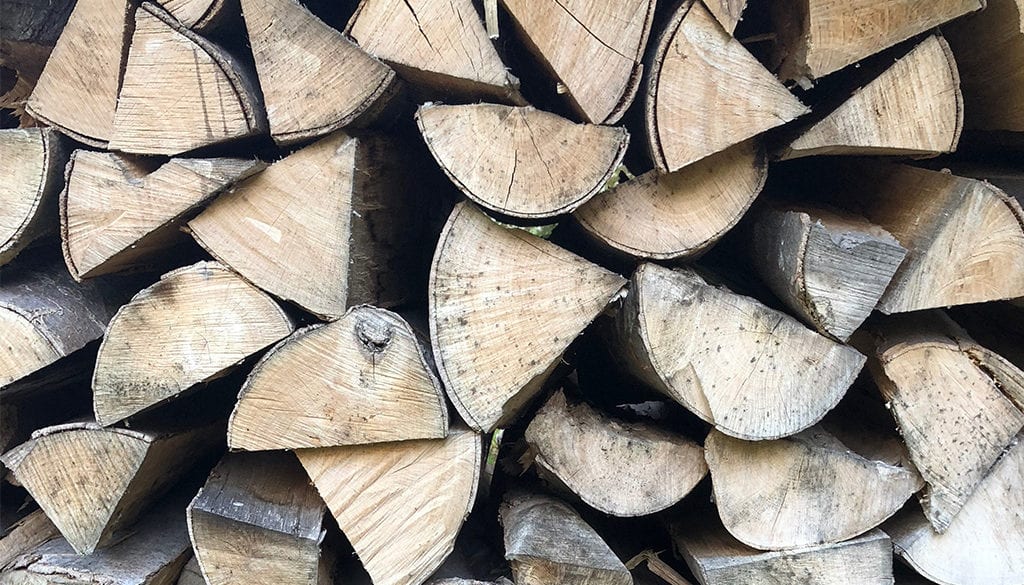Why we welcome the UK coal ban, our environmental ethos and sustainability through solid fuel.
The use of coal
We are passionate about sustainability, and our environmental impact.
You might roll your eyes at that statement, and rightly equate the kitchen ranges we so adore with the polluting use of filthy house coal. But hear us out for just a minute… appearances can be deceiving! We’ve had many years of pondering and problem solving this, so we may conduct the conservation work that we love and believe in, without the cost to our conscience.
We warmly welcome the introduction of the domestic ban on house coal and wet wood, which comes into effect in February 2021, but there’s been a lot that is misleading in the coverage of this ban in the media. The use of smokeless coal and appropriately dried wood is still permitted. We personally only use kiln dried wood and an occasional scoop of smokeless. Which is what we advise all of our customers.
In reality the ban is nothing new and most cities have long had a ban on the use of house coal – starting with London’s clean air act of 1956. House coal is one of the dirtiest fuels for local air quality – with 9.14g per tonne of particulate matter produced according to DEFRA. As a couple of people who spend an unreasonable amount of time up chimneys and cleaning out the flues of victorian ranges, we can attest that house coal is disgusting stuff. If you’ve seen Olly after a days work, you’ll know what I mean.
Ironically, at the same time as introducing a domestic ban on the use of house coal, our government has given the go ahead to the UKs first deep coal mine in decades. We are slowly moving away from coal powering our national grid, but its replacement has been gas, not the renewable and achievable alternatives of wind and solar power. We believe that to meet the emissions targets more needs to be in place to limit industrial and aviation emissions rather than the responsibility being disproportiantly placed on the individual.
The ban on burning wet wood should, hopefully, stop the selling and burning of unseasoned wood which has by far the highest particulate rating of 30.28. It is an incredibly inefficient fuel, and causes terrible build up of tar and pitchmen in the flues of your range/stove and chimney. If you’re not already burning kiln dried or well seasoned wood with a moisture level less than 12%, you should be, dried wood is said to be carbon neutral, and you’ll see the difference in the performance of your appliance.
The ban does not encompass smokeless fuels – these are much cleaner in terms of particulate emissions. Anthracite (naturally occurring smokeless coal), has a rating of 1.84, less than 1/4 that of even kiln dried wood. This is a mined fossil fuel however, so the particulate emissions are by no means the whole story here, but if you chose to run your appliance on it, this represents a much cleaner version of coal which is legal to burn throughout the UK. Another form of smokeless fuel is manufactured briquettes which are formed of anthracite dust, a by-product of mining, bound together with molasses. These fuels have an even lower particulate rating than anthracite, and are therefore the most desirable to use, aside from dried wood. There are many ‘eco’ versions now on the market, which replace up to 50% with sawdust or other waste products. We are always mindful of these products, keeping an eye on their heat output and the quantities burned. Sometimes it’s a false economy to use them if you’re burning double as much of the ‘eco’ version, you’re burning the same amount of anthracite dust!
Around 86% of UK homes are heated by a gas boiler, which produces 60% less CO2 than coal and far less particulate air pollution. However, as the National Geographic reported this week, the gas mining and fracking industry has a serious impact on methane emissions in the atmosphere, it’s not just cows that are a problem when it comes to methane! Because, for most people, our power is supplied through the national grid, we have the luxury of being removed from the realties of our fuel consumption, not getting our own hands dirty. But it begs the question whether the most environmentally concious heating choice, on a budget, is in fact a dried wood fire?
Other earth friendly options include very expensive but well received heat pumps, biomass boilers which burn wood pellets, and of course if you can generate enough of your own solar energy to power electric radiators or an electric boiler, but most of these options are simply unaffordable for your average UK household.
What do we use?
Well, we don’t have a range, yet! We live on a boat and don’t have central heating, so all our heat comes from our solid fuel stove, which we run on kiln dried hard wood logs. As such we’re off grid, and our power is solar. In the workshop, our electricity contract has always been with Green Energy, a South West company which matches the electricity we use from the national grid with sustainable energy from South West wind and solar, putting this back into the grid.
Our work van is a modern diesel, as there are no realistic options at the current time but we eagerly await an affordable electric van which can go the distance!
What about manufacture?
“Our ethos is that if something is built to a high specification in the first instance then it will have not only have a long service life but it can be repaired if required. For this reason, we believe ‘built to last’ should be the mantra of anyone serious about sustainability in manufacture.”
Oliver Osborne
Metals of all types are almost infinitely recyclable. We use 100% recycled iron and brass for our castings, specially selected by the foundryman for its quality. Coupled with the craft of the foundryman it follows that the castings we produce are of exceptional quality and will last for generations to come. The remelting of existing iron and yellow metal stocks uses dramatically less energy than its manufacture from first principles.
The fact is the ranges, stoves and grates we work with already exist, and we believe passionately in preserving what’s left of our domestic heritage for future generations, and in understanding more of our ‘below stairs’ history. At present, these are not listed as protected artefacts, and therefore have disappeared at an alarming rate. We’re committed to conserving and restoring what’s left for posterity.
There are some regrettable uses of packaging and non-recyclables in our workshops, for instance the use of sealants and resins for casting when pattern making. We continue to strive to find alternatives, but in the mean time we keep pretty low usage.
We do receive a lot of postage materials like bubble wrap and jiffy bags, which come from sub-contractors and suppliers. If you’ve ever received post from us, you’ll know well enough that we reuse this and use paper tape – it’s not always the prettiest parcel, but it gets reused to within an inch of it’s life and we’ve never bought a roll yet!
One difficulty is when palletising a range for shipping, we need to wrap it in polythene wrap to keep all the moving parts secure and protect the surface. This is the bain of my life – if anyone knows of a bio-degradable wrap, please send recommendations my way!
When on site fitting a range, we only use Lime in our installations. Lime creates 20% less CO2 than Portland cement in its manufacture and unlike cement absorbs CO2 whilst setting so is close to carbon neutral. Portland cement is used on request when required for historical purposes.


